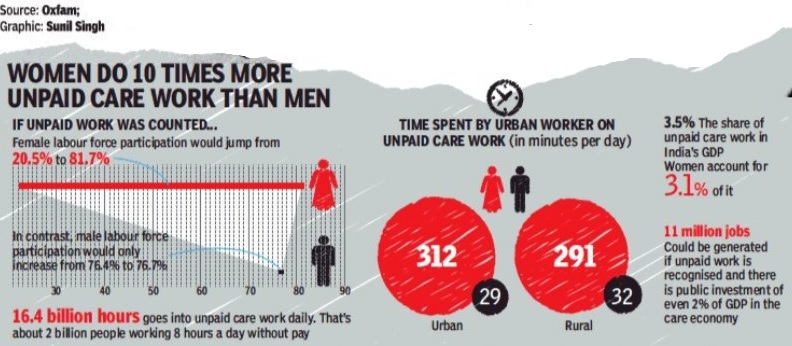7667766266
enquiry@shankarias.in
Care work is vital for economies in general and India needs to have a strategy and action plan for improved policies.
As per the ILO, India spends less than 1% of GDP on the care economy.

Women’s unpaid work is valued at 3.1 % of GDP in India.
References